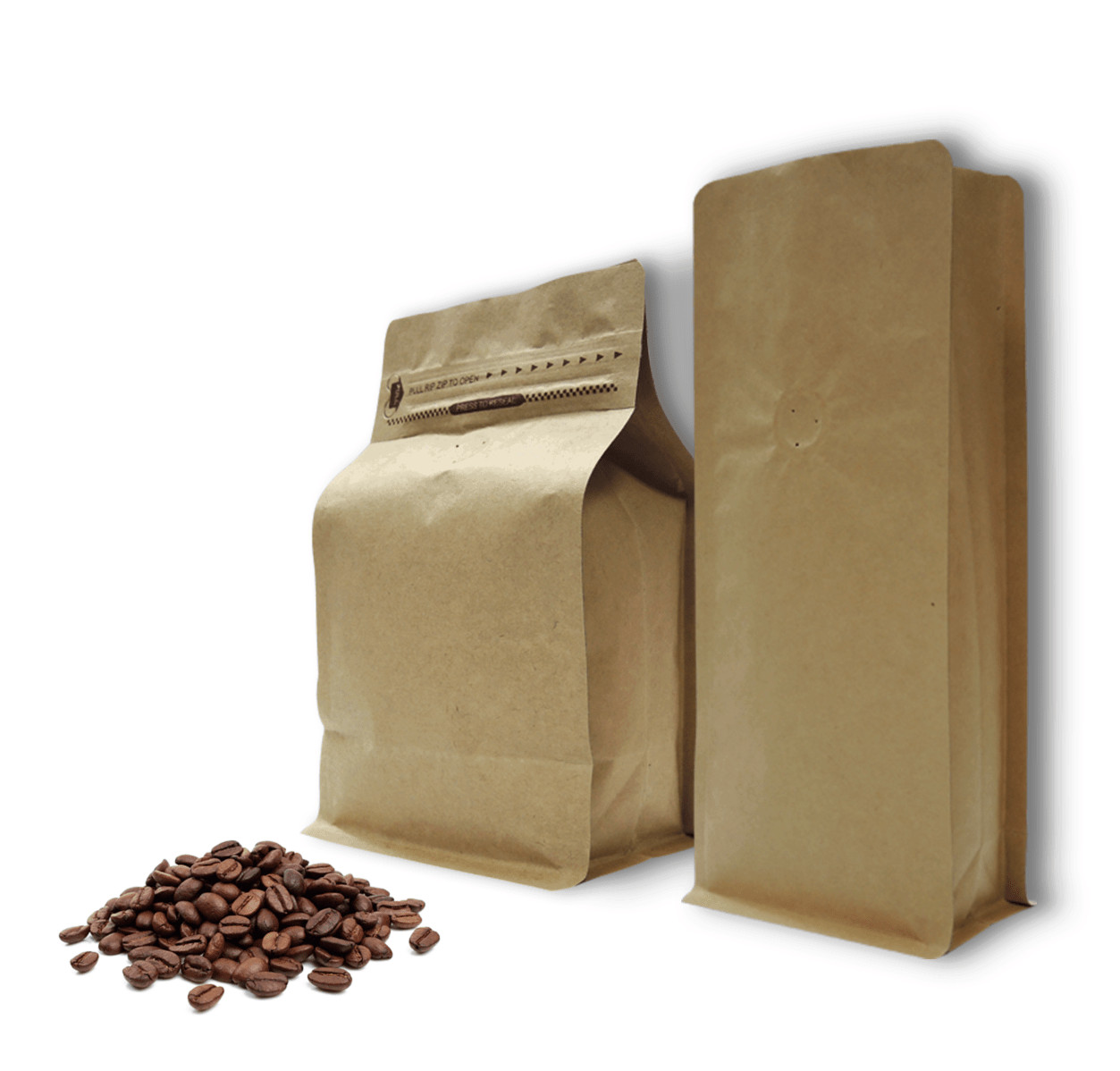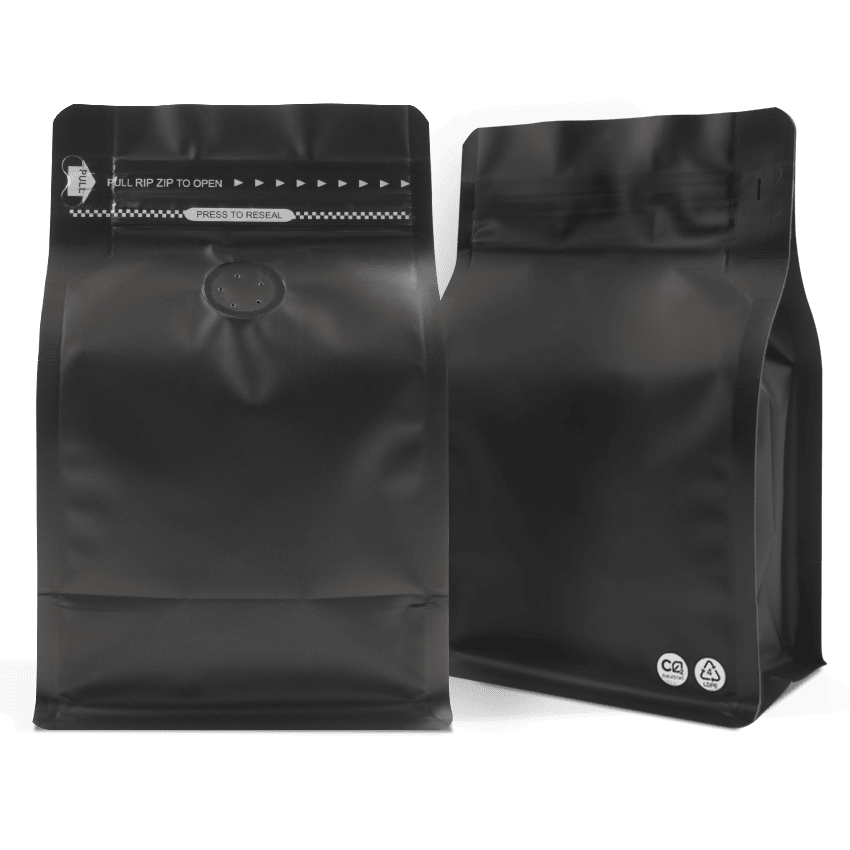
When it comes to coffee, it’s important that the packaging is not only interesting and unique, but flexible and functional. At The Bag Broker, we supply coffee bags in a range of designs, sizes and premium finishes to meet the precise needs of your branding.
Materials
The best material for your coffee bag may depend on how much time there will be between you filling it and your customer opening it. High-barrier packaging like metalized films and aluminium foil laminations will have a longer shelf life than a simple paper pouch.
Air-tightness is critical for maintaining freshness, so unless you’re packing bags in the morning and selling them directly to a customer in small quantities, we would recommend some kind of foil or composite. If you are conscious about the environment, you might be interested in our fully biodegradable
Bio Bags.
Don’t forget that the material you choose for your bag will impact the way that your label or branding stands out. If you would prefer to move away from labels, we offer
rotogravure and flexographic printing options for a professional finish.
Closures
Of course, it’s important that coffee bags can be resealed between uses to prevent the beans or grounds from going stale. At The Bag Broker, we offer bag styles with
an optional zip closure, limiting how much the coffee – or whatever else is being stored inside – is exposed to the air or moisture.
If you aren’t sure about whether your products need a zip closure,
contact our team and we’d be happy to share our experience and expertise to help you make a decision. We can have stock bags shipped within 48 hours.
Valves
The most unusual part of coffee packaging is typically the valve, identifiable by a small hole (or several small holes) near the top of the bag. Some people believe it’s there so that, when the bag is squeezed, you can inhale the aroma of the beans and see whether it’s to your liking – but this isn’t what it’s intended for!
Freshly-roasted coffee gradually releases carbon dioxide, which causes any sealed container to expand (and potentially burst). The pinhole you see is actually
a degassing valve that allows the CO2 to escape without letting in any oxygen (which would cause the beans to go stale).
More information
For more details about high-quality coffee packaging, take a look at our dedicated
bags for coffee or send your questions to
bags@thebagbroker.eu.
 When it comes to coffee, it’s important that the packaging is not only interesting and unique, but flexible and functional. At The Bag Broker, we supply coffee bags in a range of designs, sizes and premium finishes to meet the precise needs of your branding.
When it comes to coffee, it’s important that the packaging is not only interesting and unique, but flexible and functional. At The Bag Broker, we supply coffee bags in a range of designs, sizes and premium finishes to meet the precise needs of your branding.


